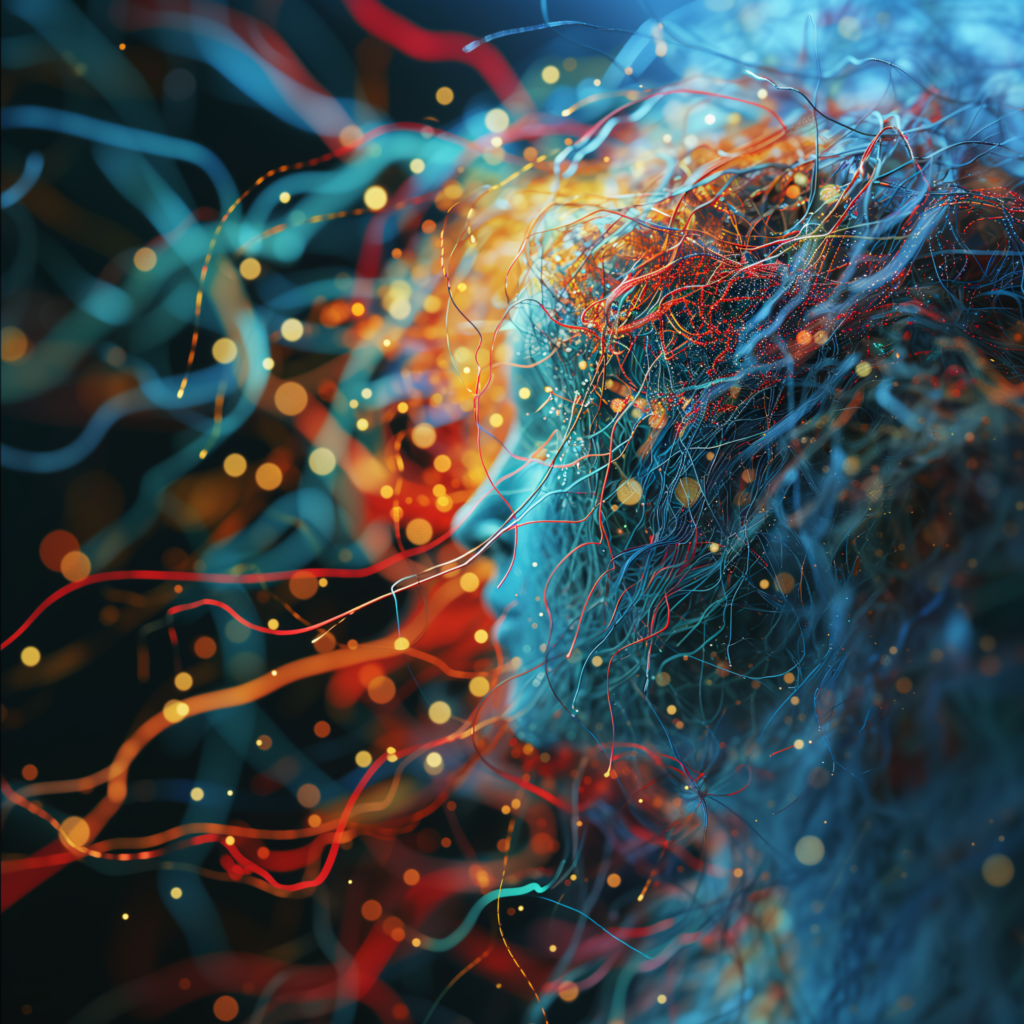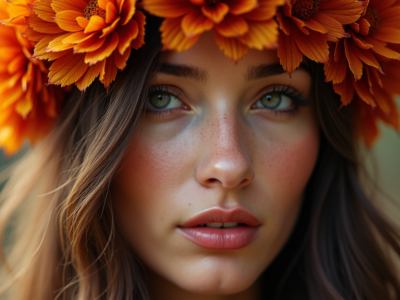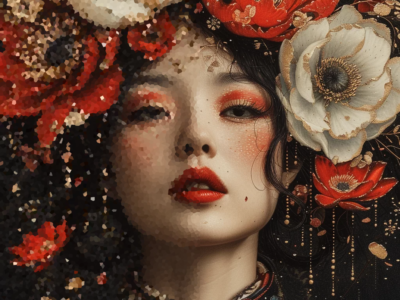Thanks to spectacular advances in the fields of deep learning and neural networks, tools such as Midjourney or Dall-E make it possible to create stunning images from simple text descriptions. These technologies are not limited to graphics professionals; they are also accessible to amateurs, opening up a world of creativity and innovation.
At the origin lies machine learning, where computer models learn to interpret and manipulate visual data. These models, trained with large image datasets, learn to recognize complex patterns and structures.
Key technologies involved include convolutional neural networks (CNNs) and innovative architectures such as generative adversarial networks (GANs) and diffusion models. CNNs are effective for analyzing images, capturing features and patterns at different levels of complexity. GANs, on the other hand, use a duality approach where one network generates images and the other evaluates their realism, thus promoting the creation of new and realistic visual content.

Diffusion models represent another method, where they generate images by progressively reversing an image degradation process. This mechanism produces images of impressive quality and detail, particularly for complex textures and shades.
Let’s explore these techniques in more detail
Deep Learning
Deep learning is a subfield of machine learning that uses algorithms inspired by the structure and function of the human brain, called artificial neural networks. These networks are made up of layers of neurons, each performing calculations and transformations on the data fed to them. The “deep” aspect of deep learning comes from the large number of these layers, which enables the model to process data in a more complex and nuanced way.
Functioning of Neural Networks
Neural networks are structured in layers: an input layer, several hidden layers and an output layer. Each neuron in a layer receives inputs, processes them using an activation function, and passes the result on to neurons in the next layer. Learning occurs by adjusting the weights of neuronal connections, a process guided by a method called backpropagation and an optimization algorithm such as the descending gradient.
Supervised vs. Unsupervised Learning
- Supervised learning: The model is trained on labeled data. It learns to predict the outcome or category of new data based on this learning.
- Unsupervised learning: The model explores unlabeled data to discover patterns and hidden structures without external guidance.
Convolutional Neural Networks (CNN)
Particularly important in image generation, CNNs are a type of artificial neural network where neurons correspond to receptive fields in a similar way to neurons in the human visual cortex. These networks are excellent for processing data with a grid structure, such as images. They use convolution operations to filter and extract features from images, making them powerful for tasks such as image recognition and image generation.
Generative Antagonist Networks (GANs)
GANs are a type of artificial neural network used in unsupervised learning. They were introduced by Ian Goodfellow and colleagues in 2014. This technology is revolutionary in the field of AI, not least for its ability to generate new data that may be indistinguishable from real data.
Structure of GANs
A GAN consists of two main parts:
- The Generator: It creates images (or other data types) that resemble the actual examples in the training dataset. The generator learns to produce increasingly convincing data over time.
- The Discriminator: This evaluates images, distinguishing them as “real” (from the training dataset) or “fake” (produced by the generator). The discriminator refines itself to become better at detecting fakes.
Learning process
In a GAN, the generator and discriminator are trained simultaneously in a cat-and-mouse game. The generator tries to fool the discriminator by producing increasingly realistic images, while the discriminator strives to improve its ability to distinguish truth from falsehood. This competitive training improves the capabilities of both networks until the generator produces images that are almost indistinguishable from the real ones.
The Diffusion Templates
Diffusion models are a class of generative models in deep learning. They are used to generate high-quality data, such as images, by simulating a diffusion process. This process involves gradually transforming a random sample into an organized structure (such as an image), following a carefully orchestrated path.
How Diffusion Templates work
The operation of diffusion models can be divided into two main phases: the diffusion (or sounding) phase and the dediffusion (or generation) phase.
- Diffusion phase: In this phase, the model gradually adds noise to a starting image, degrading it until it becomes random noise. This step is carried out in several iterations, where at each iteration a small amount of noise is added.
- Diffusion phase: This is the generation phase where the model learns to reverse the noise process. Starting with random noise, the model uses a neural network to predict and cancel progressively added noise, thus reconstructing the original image or a new image based on specific instructions.
Importance of Diffusion Models in Image Generation
Diffusion templates have proved particularly effective in generating high-quality images. They can create realistic, detailed images, and are particularly good at handling textures and fine detail. This makes them ideal for applications such as art creation, product design, and even scientific research where image accuracy is crucial.
Advantages of Diffusion Models
- High Quality Images: They produce images with fine detail and high visual quality.
- Flexibility: They are capable of generating a wide variety of images by modifying the generation conditions.
- Generation Process Control: The ability to regulate the broadcast and dediffusion process offers increased creative control.
Steps in image generation
Data Collection and Preparation
- Data Collection: It all starts with collecting a large set of image data. These images can vary considerably, depending on the type of images you wish to generate.
- Cleaning and Pre-processing: Images are then cleaned and pre-processed. This includes tasks such as cropping, normalizing, and sometimes labeling images for supervised model training.
Model design
- Choosing the Architecture: Depending on the objective, an appropriate neural network architecture is chosen. For image generation, architectures such as convolutional neural networks (CNNs), GANs or diffusion models are often used.
- Model configuration: This step involves configuring model parameters, such as the number of layers, the size of filters in CNNs, and other hyperparameters.
Training the Model
- Learning: During training, the model learns to recognize and reproduce patterns in the image data. For GANs, this includes simultaneous training of the generator and discriminator.
- Validation and Adjustment: The model is regularly validated on a separate data set to ensure that it generalizes well and does not overlearn. Adjustments are made as required.
Image Generation
- Text/Input-based generation: For models like DALL-E, a text description is converted to an image. For other models, this may involve feeding the model with a specific type of input (for example, random noise for GANs).
- Generation Process: The model applies what it has learned to generate a new image. In GANs, the generator creates images that the discriminator evaluates, whereas in diffusion models, the gradual denoising process is used.
Post-Processing and Optimization
- Image refinement: Generated images can be refined or retouched to improve quality or aesthetics.
- Model Optimization: Based on the results, the model can be further optimized to improve the quality of image generation.
Evaluation and Deployment
- Evaluation: The images generated are evaluated for quality, realism, and relevance to the inputs provided.
- Deployment: Once satisfactory, the template can be deployed for practical use, whether in a web application, content creation platform, or other.
artificial intelligence-based image generation technologies, such as convolutional neural networks, GANs, and diffusion models, represent a significant advance in the field of digital creation. These tools, ranging from Midjourney to Dall-E, have democratized access to the creation of high-quality images, making these capabilities available not only to graphics professionals but also to amateurs. This openness creates a world teeming with creativity and innovation, accessible to a wider audience.
It’s important to recognize that, while powerful, these models can sometimes produce unexpected results, especially when faced with ambiguous or complex inputs. This underlines the importance of human supervision and intervention, particularly in the image post-processing process. Humans play a crucial role in interpreting, refining and contextualizing results to ensure their relevance and quality.
In conclusion It should be noted that the use of these technologies must be guided by ethical and responsible considerations. Issues such as copyright, ethical representation and the prevention of misinformation are paramount to the conscious and responsible use of AI in image creation.
AI NEWSLETTER
Stay on top of AI with our Newsletter
Every month, AI news and our latest articles, delivered straight to your inbox.

CHATGPT prompt guide (EDITION 2024)
Download our free PDF guide to crafting effective prompts with ChatGPT.
Designed for beginners, it provides you with the knowledge needed to structure your prompts and boost your productivity
With this ebook, you will:
✔ Master Best Practices
Understand how to structure your queries to get clear and precise answers.
✔ Create Effective Prompts
The rules for formulating your questions to receive the best possible responses.
✔ Boost Your Productivity
Simplify your daily tasks by leveraging ChatGPT’s features.
Similar posts
Flux.1, the new ultra-realistic image generator
Generative AI has not finished surprising us. Among recent innovations in this field, the Flux.1 model stands out as a true revolution for the generation of realistic and artistic images. …
Flux.1 : How to create ultra-realistic AI images in just a few clicks
Flux.1, developed by Blackforest Labs, is a powerful tool for creating high-quality AI images with an ease of use that appeals to beginners and experienced users alike. To find out …
Image upscaling: 10 best free AI tools to enhance your photos
How does image upscaling work? AI image upscaling does more than just add more pixels. It reinterprets the original image to include details that didn’t exist before, based on models …


